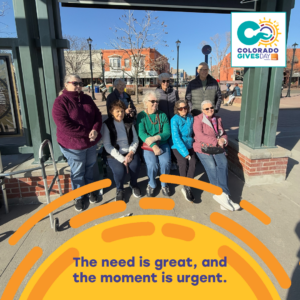Via Mobility Services (Via) and Seniors’ Resource Center (SRC) announced that SRC has transferred their Transportation Program to Via.
Access to affordable, accessible transportation options is essential to enhancing the independence and quality of life of all Coloradans.
Seniors’ Resource Center has been a leader in providing vital transportation services to older adults for over 40 years. As communities across the Denver Metro area continue to age, the demand for rides is far outpacing SRC’s capacity to serve the active seniors who have places to go and things to do but may not be able to drive independently.
On July 1, 2020, Via assumed SRC’s transportation program. Via will retain all SRC staff and vehicles, and riders can expect a seamless transition. This transition will increase the availability of paratransit in the Denver Metro region without sacrificing the quality of service that SRC riders expect.
For more information on this announcement, please contact Lyndsy Morse, Communications Manager, Via Mobility Services, Email: lmorse@viacolorado.org, Phone: 303.473.2882
By now it is no secret that COVID-19 has decimated the public transit sector. Ridership on public transportation is down by 63% in the United States compared to pre-crisis levels, according to a recent study of passenger movements by Transit, the multimodal trip planning app. Read more
CENTENNIAL, Colo. — After high school, plenty of young adults are faced with the questions of “what’s next?” For a young man in Centennial, that question is much harder to answer given his rare disability, so his family is asking for help to change his life for the better.
Designers are considering a hybrid for curbless design. Eliminating curbs has been a concern for members of the blind community. Continued guidance from the blind community is needed. Each block will have its own theme: History, Art, Family, Playground. It was suggested that outreach be done with specific groups for input for interactive features (e.g., persons with autism, blind community, people who are deaf, etc.). The public will be keep dated through various tools. There will also be activities during construction such as “coffee on the mall” to provide descriptions of progress on project. Potential missing stakeholders: Craig Hospital, Youth, Law Enforcement, people experiencing homelessness.
En español | As you know, COVID-19 is a respiratory disease that can cause serious lung damage and breathing problems — along with a host of other health issues.
And as the virus continues to spread, you may be wondering if strengthening your lungs will help you fight it off if you are infected. Read more
![DRMAClogo[1] DRMAC](https://drmac-co.org/wp-content/uploads/2019/12/DRMAC20logo1.jpg)






